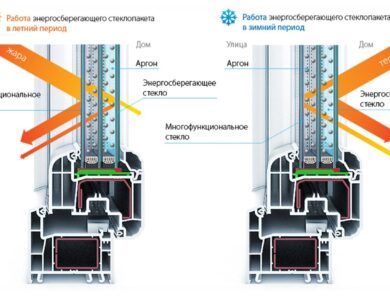Convector oven, its advantages when heating a house or any other room
It's no secret, that heating a room with gas is very expensive, tariffs are rising, and the quality of services leaves much to be desired, so many people are switching to alternative heat sources, namely, buy a stove to heat a house or any other room. Let's reveal the advantages and features of convector ovens.
See
There are several types of such furnaces: metal, cast iron, brick.
- The first type consists of steel, which is able to withstand high temperatures. This stove heats the room very quickly, but the layers of metal are extremely thin and the heat disappears quickly. Stainless material is used for the best effect. Another weakness of this design is that, that its seams may burst when heated, it all depends on the quality.
- The second option consists of cast iron. They are a great additional source of space heating. Such devices are very compact, they can be easily installed in any part of the house. A chimney is installed on it, which goes outside the room, removing combustion products. It warms up very quickly and efficiently.
- The third is brick kilns, they are the most popular and reliable. Their chimney has a snake shape, which allows to rationally store the combustion product, which is a source of heat. This oven heats up slowly, but the brick itself retains heat for a very long time. They are very versatile, they are used as a fireplace or a place for cooking. Accordingly, the price is higher.
What are convector ovens
It usually consists of such elements:
- The furnace is a place, where the warming material burns (firewood).
- Ashtray - a place, where the combustion product accumulates (ash).
- Grid - is a metal lattice, which put coal.
- Kamyanka is a place for bath stoves, where the stones lie.
- Chimney - serves as a device for the removal of combustion products.
- Features and disadvantages.
Pros and cons
Such stoves have proven themselves in heating homes, dachas, garages and other premises. They are able to work in two modes: instant heating and heat retention. They are very easy to operate. Firewood can be used as a combustion product, peat, coal or paper. But let's look in detail at all the pros and cons.
Positive sides:
-
does not need electricity.
- Evenly distributes heat in the house.
- Can operate on paper and wood waste.
- Extremely economical.
- Its efficiency (coefficient of performance) is close 80%.
- It is possible to control the level of combustion.
- Such furnaces come in different shapes, types and capacities, which allows you to perfectly adapt to a particular task.
- Durability.
Nevertheless, the convector system has its drawbacks.
Negatives:
- Dangerous combustion products are released during heating.
- Installation problems may occur, because everything needs to be agreed with the fire service.
- The ash released through the chimney contributes to the pollution of the environment and the surrounding area.
What are the properties of a convector wood stove when heating the cottage
Of course, that convector systems are multifunctional and suitable for almost any purpose, related to home heating. But, example, living space and cottage are two completely different environments, which require an individual approach when choosing a furnace.
Sharp temperature differences should be taken into account, so heat the stove harder or weaker - it all depends on the situation and meet certain standards:
- It should distribute heat evenly throughout the day.
- The outside temperature should be 90-95 degrees.
- With low fuel consumption, the room temperature should remain stable.
- The entire oven should be heated evenly.
- It should not have cracks, as this can lead to the release of harmful gases directly into the house.
- The size of the fuel tank should be taken into account, the more he is, the longer the combustion process will take place and the heat will remain for a longer time.
- The mechanism itself must function stably throughout 20 years.
- The appearance of the stove is also very important for the overall atmosphere.
The most economical options
The quality of home heating depends not only on the reliability of the structure, but also that, what materials and in what quantity are used. The most common option is considered furnaces with gas-generating effect. They contain a large amount of firewood, the top layer is slowly smoldering, and the lower is waiting its turn. This result can be obtained as a result of pipe draft with blowers. Their heating efficiency of the house is 75-85% Wood-burning gas stoves are well suited for summer cottages.
Another option for economical heating is considered to be gas generating furnaces with a large column. Firewood is placed in it at full height, peat, coal or other combustion materials. Top with fuel and cover. Combustion air is supplied from above through a pipe.
The process of burning the material takes place at the top, gradually moving lower. The combustion rate in the furnace can be adjusted with a damper. On firewood functions to 2 days (without refueling), and coal can heat the house to 5 days.
There are stoves with automatic loading of firewood. Such designs are served fuel on special disks thick 10-15 cm. The mechanism itself is a very complex system.
Water-fired wood stoves are another type, their flue is treated with heat exchange material. Thermal gases pass through special valves, giving heat to water. For its installation it is necessary to build the base with a heat-insulating pillow.
Conclusion
Convector ovens are an excellent alternative heat source, which is very easy to operate and very efficient. Such furnaces are very popular on the market, therefore, manufacturers have significantly expanded their diversity and capabilities.

